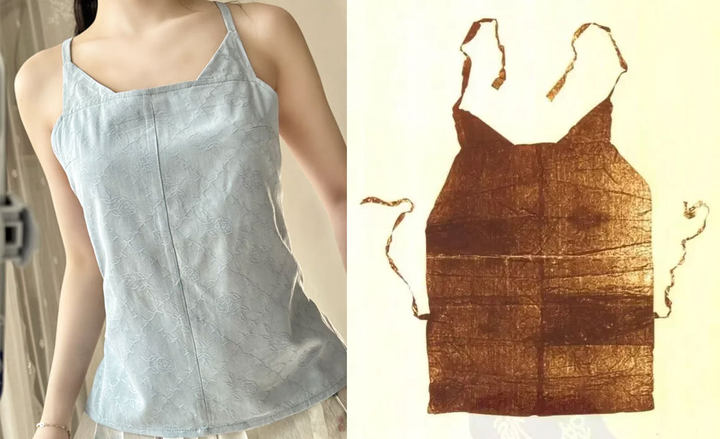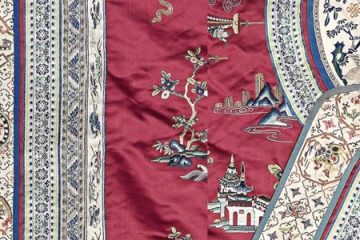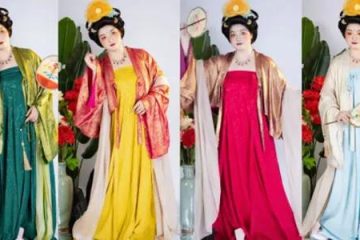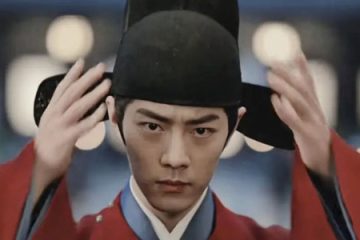Are Hanfu Clothes Really That Hot in Summer?

When it comes to Hanfu, do you think that Hanfu is the most unsuitable clothing for summer? With its layers upon layers, you could easily turn into a “human jerky” under the sun in just a few minutes. However, when we consider each piece of Hanfu as an independent item, we will find that there are actually many refreshing items in Hanfu that are perfect for wearing in summer! For example, the bijia (sleeveless jacket) and zhuyao (a kind of corset) in Ming Dynasty style, the feijixiu (sleeves with a particular style) and the Changgansi (vest) in Song Dynasty style, the tangbeizi (short-sleeved clothes) in Tang Dynasty style, and the banbi (half-sleeved garment) in Jin Dynasty style, and so on.
The summer styles we wear nowadays, such as sleeveless and short-sleeved clothes, and various materials like silk and gauze, might have already been worn by the ancients a long time ago. Moreover, they have gone through several rounds of selection over time. After all, when wearing clothes in summer, there is only one goal: to protect from the sun and stay cool. However, the design concept of Chinese Hanfu is somewhat different from that of the West. Instead of seeking coolness by exposing the skin, it aims for coolness through loose and breathable designs.
I. Styles of Hanfu for Summer
In ancient times, there were also sleeveless “vests”. This kind of sleeveless garment could be called a “bijia”, and most of them had a front-opening style. Generally, this kind of sleeveless garment was worn over other clothes. It was a style that was sleeveless, had a front opening, slits on both sides, and reached below the knees. Inherited from the Song Dynasty, it became popular during the Yuan and Ming Dynasties. Usually, it was as long as the buttocks or the knees, and some were even longer, less than 33.3 cm away from the ground.

If you are sitting at home leisurely enjoying the cool and not going out, you can wear it alone. For example, in the Ming Dynasty, the vest was often also called a “gua” or “bijia”. At that time, the vest generally referred to all kinds of sleeveless garments with different collar styles. When at home, if one didn’t wear a chest wrap and the fabric was light, it was very likely to cause what we now call “indecent exposure”. No wonder netizens would sigh: No wonder in the past, men from outside were not allowed to enter the inner quarters of a house. 🤔

Let’s take a look at the short-sleeved traditional Chinese clothing, which could be worn in layers. This kind of half-sleeved garment had two names in ancient times: “banxiu” and “banbi”. It originally evolved from a short ru (a type of traditional Chinese upper garment). Usually, it was as long as the waist, and the length of the sleeves reached the elbows or was even shorter. It was not usually worn alone. The most common way we wear it nowadays is to put it on top of long-sleeved clothes.

There were also cases where it was worn alone, generally limited to two situations. One was that women could wear this kind of sleeveless or short-sleeved garment when they were at home. The other was in scenarios such as men plowing the fields, doing manual labor, or being peddlers. These were all perfect outfits for summer.

The underwear in ancient times wasn’t something that completely wrapped the body either, and there were even styles with an open back. For example, take this piece of underwear from the tomb of Huang Sheng in the Southern Song Dynasty. When it was unearthed, it still had layers of cotton padding, and it might even have been a winter item.
The greatest advantage of this underwear was that it exposed the back and had straps at the back, which allowed the back to breathe properly. At the front, there were two parts shaped like cat ears, and the straps were fastened along the edges of the cat ears, making it less likely to shift. It could also cover up any excess flesh.
It was both stylishly designed and practical, with some clever details at the back. It was comfortable to wear and just right. The picture on the lower left is in the style of the Song Dynasty chest wrap imitating the one unearthed from Huang Sheng’s tomb.

II. Fabrics of Hanfu for Summer
In the case of Hanfu, the styles worn in winter and summer might be the same, but there will be differences in the thickness of the fabrics. Hanfu usually includes close-fitting undergarments, middle-layer clothes, outer coats, and a large number of accessories. For example, the History of the Song Dynasty: Records of Rites and Costumes stipulates that “during the summer sacrifices, officials of all ranks should wear garments made of gauze for their court and sacrificial attire.” This allows different styles of Hanfu to easily adapt to seasons with different climates. You can get a sense of how thin and light the fabrics used by the ancients were, which is truly quite different from our current industrial products.

Take various silks as an example. You can probably get a feel for it from the various silk scarves we can buy nowadays. However, the silkworms raised by the ancients could spin even finer silk, and this kind of fine silk still cannot be completely replicated today. For instance, the Plain Gauze Unlined Garment unearthed from the Mawangdui Han Tomb (weighing 49 grams) and the Peony-shaped Gauze Vest unearthed from the Tomb of Huang Sheng in the Southern Song Dynasty (weighing 16.7 grams) can be regarded as the most lightweight silk products. When folded up, they can even fit into a matchbox. 😲

Take ramie as an example. We might think that it is a very common and ordinary material. However, after being transformed by the craftsmanship of the ancients, it can also look as good as new. Ramie also comes in different qualities. High-quality ramie is like the nobility among the hemp materials. As recorded in JIn Bai Zhu Wu Ge Shi, “Its texture is as light as a cloud and its color is as silver. To whom should I give my love? I will present it to a beautiful lady. I make a robe out of it and use the remaining to make a scarf. The robe adorns the body and the scarf dusts off the dirt.” It is not an exaggeration to describe it as “as light as a cicada’s wing and as thin as rice paper.”

At the age of 39, Du Fu was waiting for an official appointment in the Jixian Academy. On the Dragon Boat Festival, he received a kudzu garment bestowed by the emperor. This kudzu garment was made of kudzu gauze fabric. It was much more breathable and comfortable than the various chemical fiber gauzes we have nowadays, and wearing it could even help lower the body temperature.

So, even in public places, when the ancients needed to wear long-sleeved Chinese outfits in layers, they could also choose light and comfortable fabrics. For example, in the picture above, it doesn’t actually give the impression of being as thick as we modern people might imagine, with layer upon layer. At that time, the ladies wore an open-fronted semi-transparent gauze garment on the outside, and the inner clothes underneath were faintly visible. All we can do is sigh and think: When it comes to being bold, sometimes we are not as daring as the people in ancient times!

Summary
Both textbooks and film and television works have depicted the humanities of our ancient times as rigid and dogmatic. In reality, Chinese ancestors knew everything. Their thoughts were unrestrained, encompassing the vast expanse of the galaxy, the universe, the celestial maidens, and the flying dragons. They were truly quite bold.
However, in their behaviors, they adhered to the principles of etiquette and morality, being reserved and composed. When people fail to understand the root of this culture, they may misinterpret this “restraint” as “conservatism”.
After looking at all these, now you know that there are quite a few styles of Hanfu to choose from for summer, right? But how should you match these Hanfu outfits? You can keep following us for more. Silk Divas will continue to bring you some practical tips on how to wear Hanfu in the summer.



0 Comments